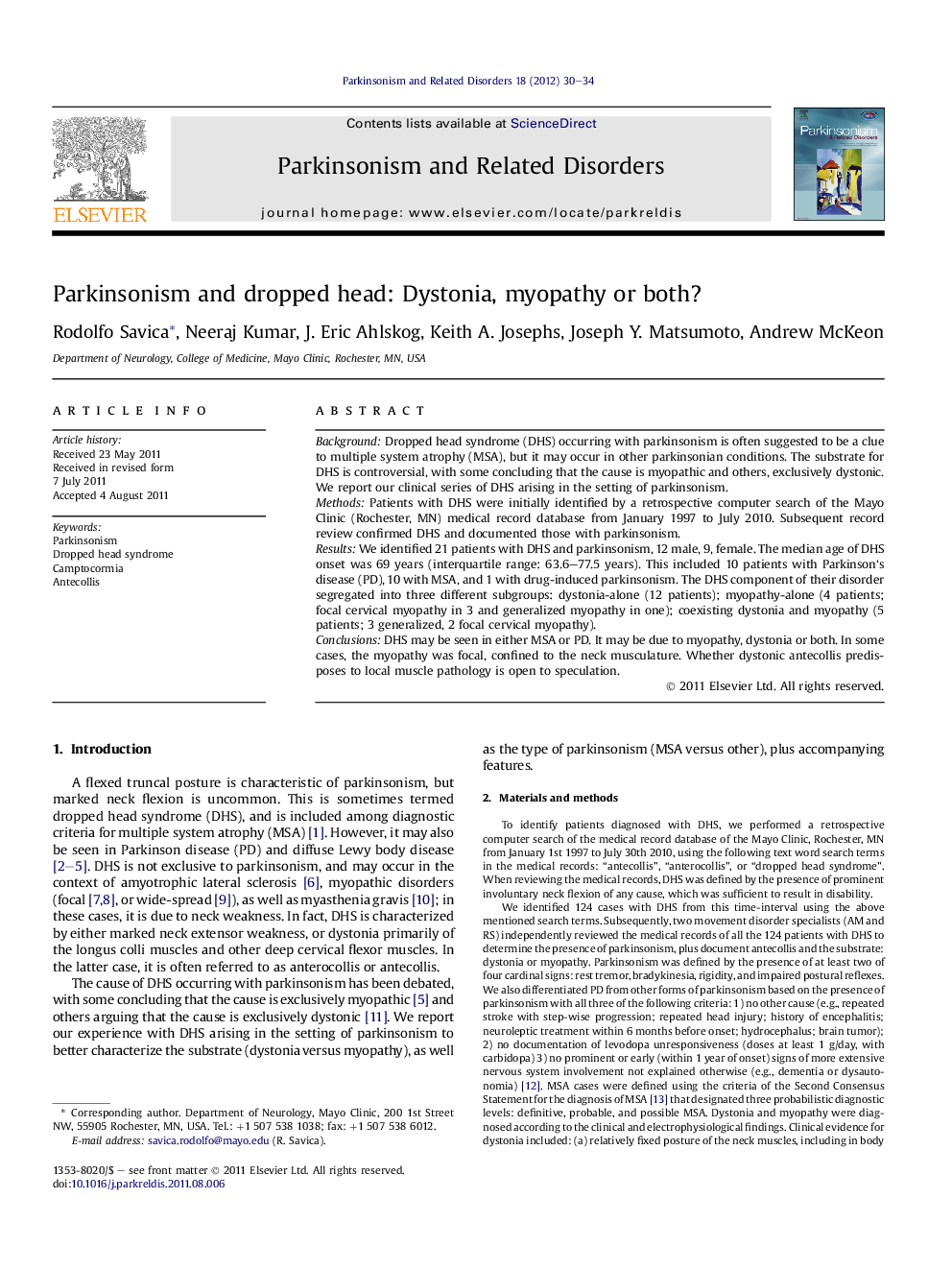| Article ID | Journal | Published Year | Pages | File Type |
|---|---|---|---|---|
| 1920659 | Parkinsonism & Related Disorders | 2012 | 5 Pages |
BackgroundDropped head syndrome (DHS) occurring with parkinsonism is often suggested to be a clue to multiple system atrophy (MSA), but it may occur in other parkinsonian conditions. The substrate for DHS is controversial, with some concluding that the cause is myopathic and others, exclusively dystonic. We report our clinical series of DHS arising in the setting of parkinsonism.MethodsPatients with DHS were initially identified by a retrospective computer search of the Mayo Clinic (Rochester, MN) medical record database from January 1997 to July 2010. Subsequent record review confirmed DHS and documented those with parkinsonism.ResultsWe identified 21 patients with DHS and parkinsonism, 12 male, 9, female. The median age of DHS onset was 69 years (interquartile range: 63.6–77.5 years). This included 10 patients with Parkinson‘s disease (PD), 10 with MSA, and 1 with drug-induced parkinsonism. The DHS component of their disorder segregated into three different subgroups: dystonia-alone (12 patients); myopathy-alone (4 patients; focal cervical myopathy in 3 and generalized myopathy in one); coexisting dystonia and myopathy (5 patients; 3 generalized, 2 focal cervical myopathy).ConclusionsDHS may be seen in either MSA or PD. It may be due to myopathy, dystonia or both. In some cases, the myopathy was focal, confined to the neck musculature. Whether dystonic antecollis predisposes to local muscle pathology is open to speculation.
